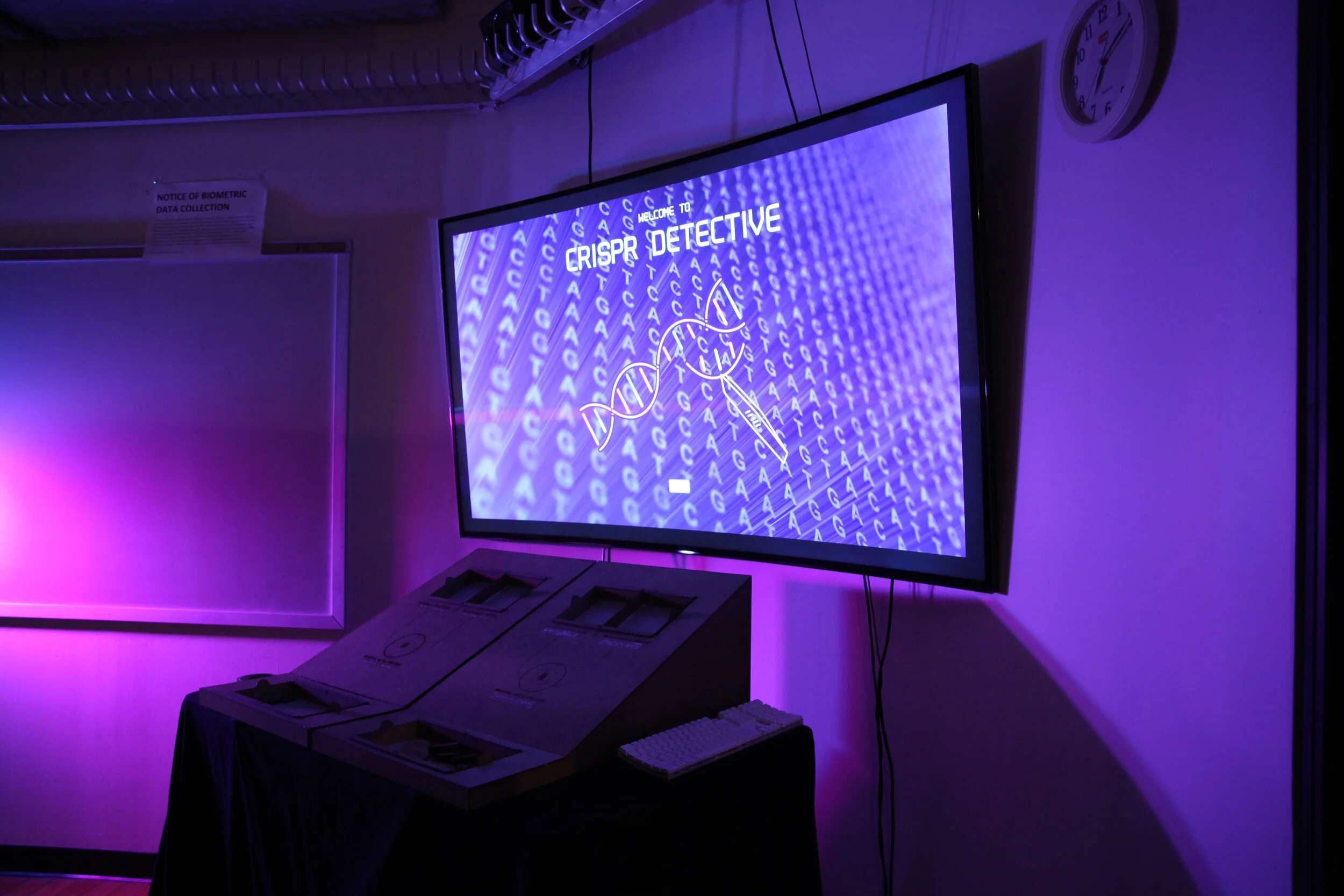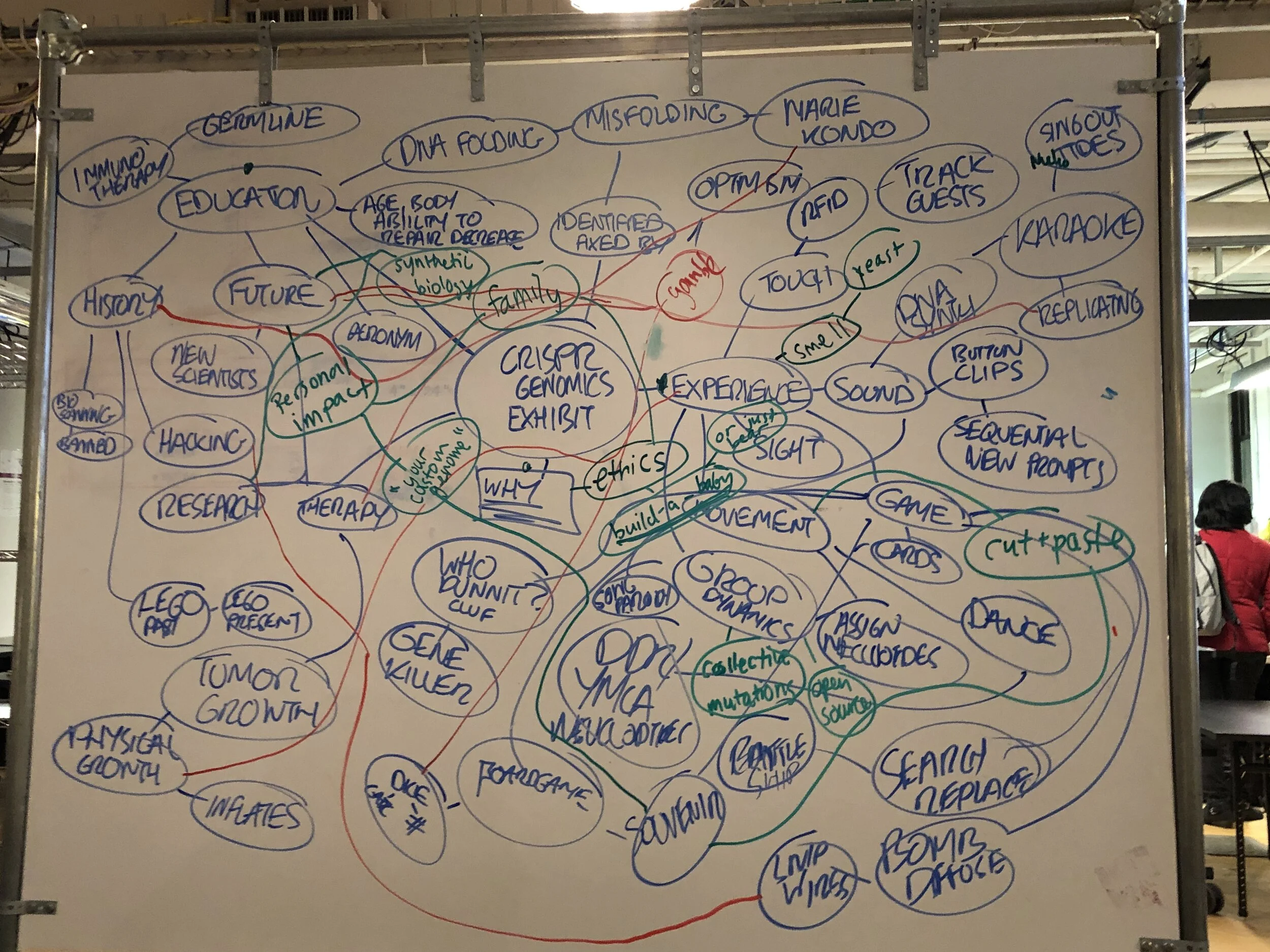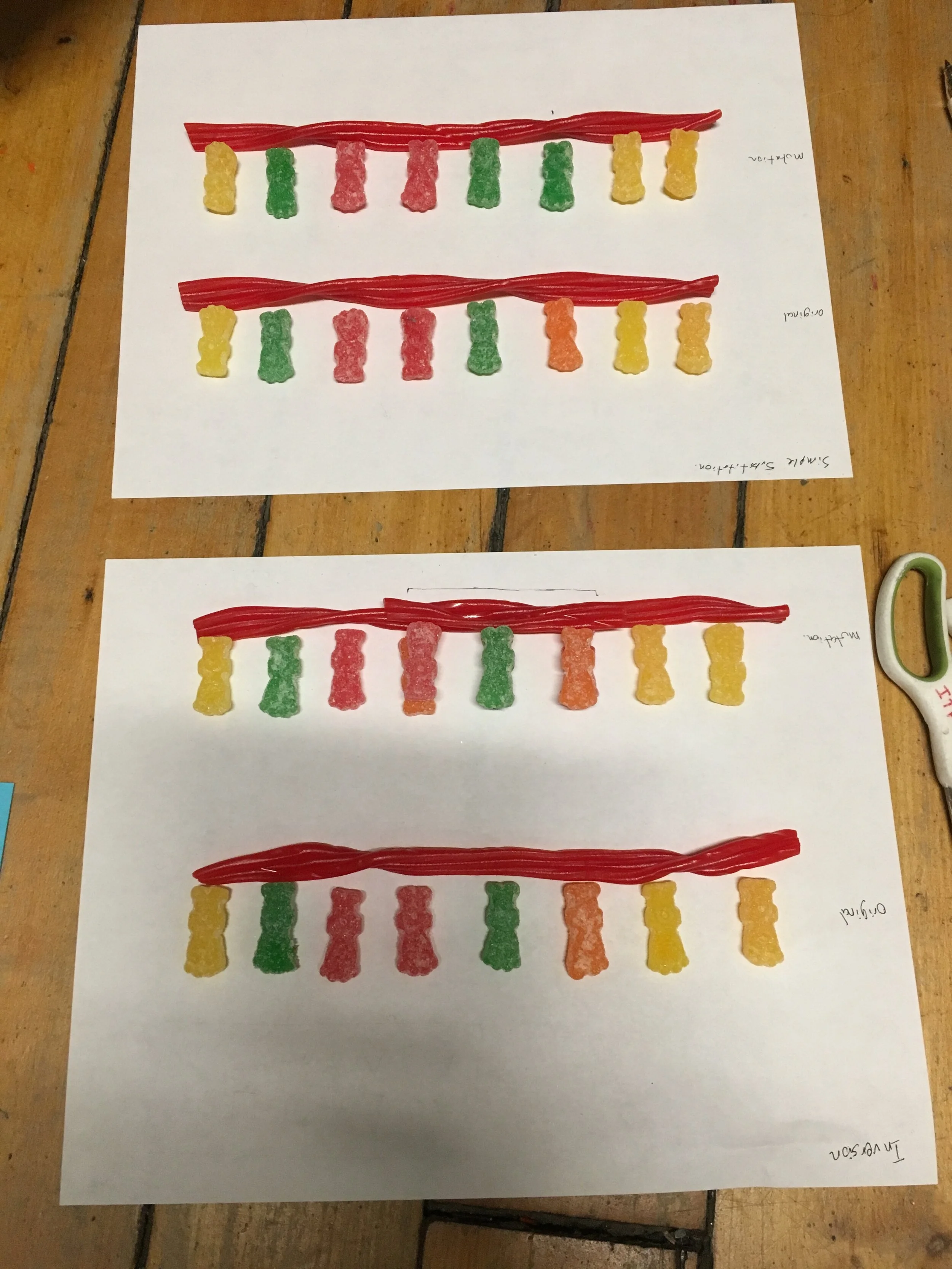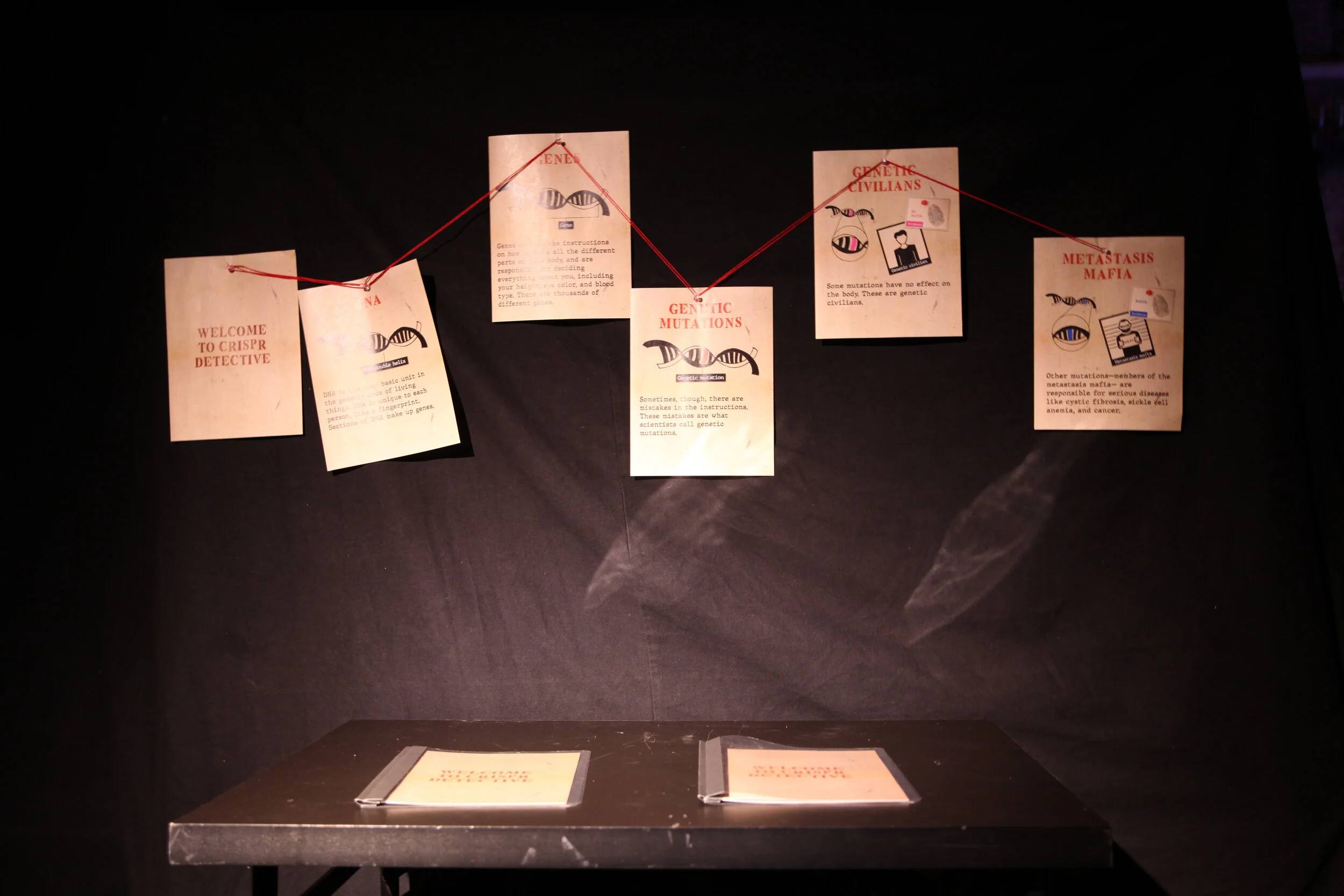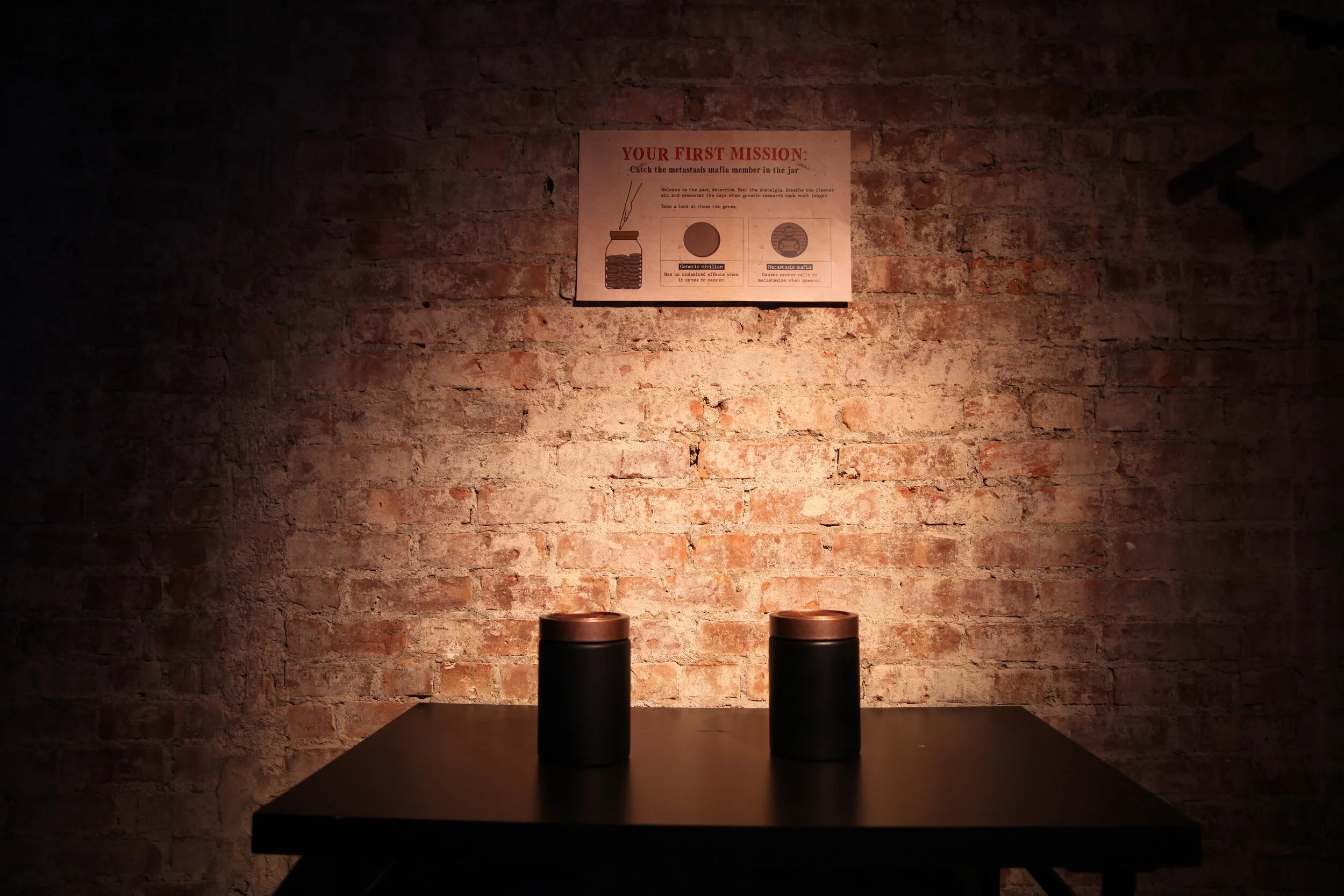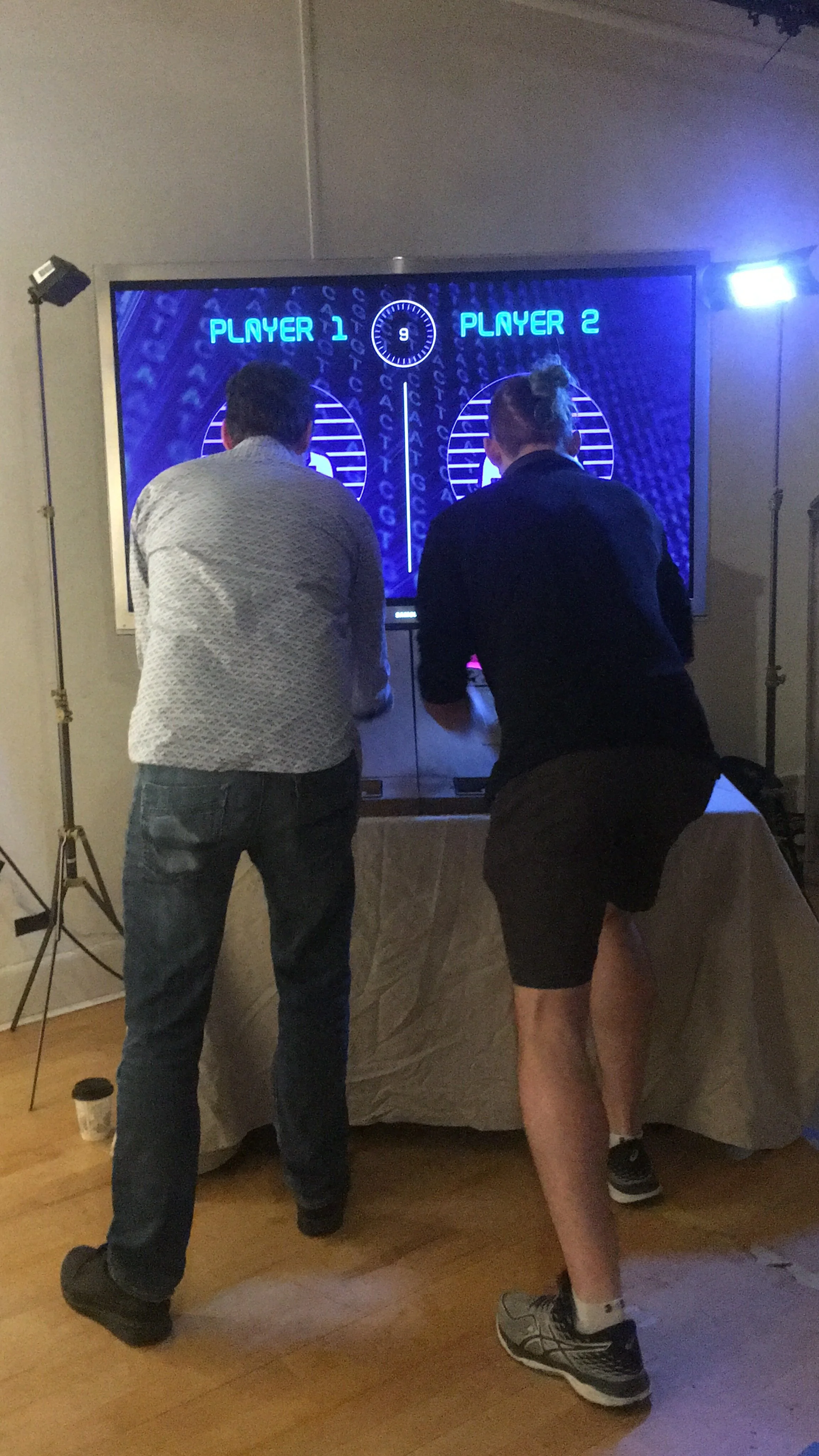CRISPR Detective
This is a semester long project developed during the Playful Communication class at ITP NYU. The promise if the class was to convert a complex subject that was developed by researchers at NYU and come up with a playful way to explain the difficult science behind to a wider audience. My group decided to work with a research conducted by Dr. Neville Sanjana’s work on the novel uses of CRISPR in cancer genomics.
Final Setup for CRISPR Detective
The problem
There has been a lot of buzz about the uses and misuses if the CRISPR technology in gene editing, since it is a subject difficult to understand, the knowledge is not universal. The main goal of this project was to find a way to communicate effectively and interactively a scientific research that is normally very complex to understand. Another problem that we as a group decided to try to solve with our exhibit, was the fact that most interactive exhibits in museums are normally not accessible for blind people, however we decided to try to do our project as accessible as possible.
Coming up with a solution
Ideation:
The ideation phase was developed during multiple sessions and using different techniques, the initial brainstorming was developed with the systems thinking approach, the entire team gathered around a big whiteboard with the goal of understanding the subject and finding patterns of correlation between them. The freedom that this technique gave us allowed us to come up with a big amount of ideas that we later decided to start prototyping. We mapped some of our internal ideas and later on invited some people from outside our group to use markers and try to find patterns that would help us come up with better ideas.
A very important part of the beginning of our process as a group was to make sure that all of us understood (at least the basis) the research behind our exhibit, therefore we had to use a lot of different kind of techniques in order to be able to visualize and understand what a genetic mutation mean. One of the must successful ways of understanding was by using candies with different colors and simulating the effects of mutations in the DNA by changing the position of the amino-acids (sour patch kids in this case).
Design Concept:
After several rounds of redesign and user testing we landed on an idea that was using the metaphor of being a detective in order to catch the members of the metastasis mafia, this would involve solving three different missions, as part of our strategy we decided to do two activities that were low-tech and focus the efforts of the fabrication and the tech for the portion that was more complex to solve and that would be more interactive and playful for the users, we wanted to create a flow in the room in which the audience could navigate and learn about CRISPR in a fragmented way so that they could absorb the learnings from one activity and then move to the next one. As part of the early stages of the ideation we came up with three stages of the interaction with sketches.
First User Testing:
During one of our classes we decided to test the main “game” that we had proposed, it consisted on a whiteboard with suspects that would have a horizontal board in which the audience would have to solve a melodic puzzle by being able to identify which “kind” of mutation was presented as a suspect and which kind of mutation was affecting the original gene provided in the horizontal board. By doing low fidelity prototyping we very fast learnt that the learning curve for our game was way too high and that the users were not enjoying because they were not able to understand what they were supposed to do. This dictated the beginning of the redesign.
Redesign:
The team went back to the research and decided to focus on another element that we haven’t considered before, we stablished our goal to teach the audience the benefits of using CRISPR in order to identify genes that cause metastasis and which ones does not (the same way that Dr, Sanjana is going with his research). In order to do that we had to come up with a new game for the last portion of the exhibit.
Second User Testing:
The game would consist on clarifying the “coins” (represented genes that were mutated by using CRISPR technology) into two different buckets (the ones that caused metastasis and the ones that didn’t). This was is was going to be a very repetitive process and we need to make sure that the users were comfortable and excited committing against each other. We used a very lo-tech user testing technique, by using the voice of one of our teammates he would determine if a coin had to be places in which container. By doing this user research we leant a lot about the interaction and the tech that we had to implement in order to finish the project.
Accessibility: One of the goals of our project was to make it accessible for the blind population, having Antonio Guimaraes as part of our design and development team was crucial in order to understand what it meant to at least try to create a project that takes into consideration the accessibility of it’s content and also the interaction. By using braile in the printed materials and in the fabricated boxes and voice commands to explain the game we enables that the whole exhibit could be enjoyed by most of the population.
Visual Design:
The fabrication was a long and complicated process because the exhibit had 3 components, the introduction that consisted on “case files” that were handed to the users, the visual design of these booklets and the way we illustrated the science behind the research was crucial to be designed carefully. The screens for the third interaction had to be designed in Sketch as well and later on implemented in code. The way that both elements have a visual contrast was intentional, the idea was to communicate that before the times of CRISPR, sorting genes was a manual, slow and not so accurate process, therefore those elements in the first and second interactive are designed with an old time UI. The third interactive, however, was designed to explain the times of CRISPR and how the technology has enabled to improve the scientific research and the search for the cure of cancer, therefore those elements were designed by using more neon colors and lights.
The reset challenge:
One of the biggest challenge was to find a way for the audience to easily reset the game so that the next players could start as fast as possible. Since we knew the project was going to be presented in various scenarios (The Spring Show at ITP, The final presentation of the class and the AMNH Museum) we came up with an industrial design feature that enabled the users to easily extract the box that contained the coins and deposit them into the empty container on the top once the game was over. We discovered that a simple design feature was enough for the users to intuitively reset the game to it’s original state.
My Role
My role ranged from visual design to user experience research and design and I was also in charge of the industrial design and fabrication of the physical interface.
The result
The final result is an interactive installation that consists in three different parts.
1: The introduction to CRISPR technology and the research by reading the case files.
2: The manual coin game in which two users compete to see which one can find (by only using the sense of touch) the engraved coins (members of the metastasis mafia). And once they have understood that it used to be a very tedious process without CRISPR, the users are presented to the third part of the exhibit.
3. Interactive game in which we use RFID technology to read the coins that are scanned in order to determine if they are members of the metastasis mafia.
Final SETup
The following video shows the interaction in the third stage of the interactive.
Photo Gallery of attendees interacting with the final result of the project.


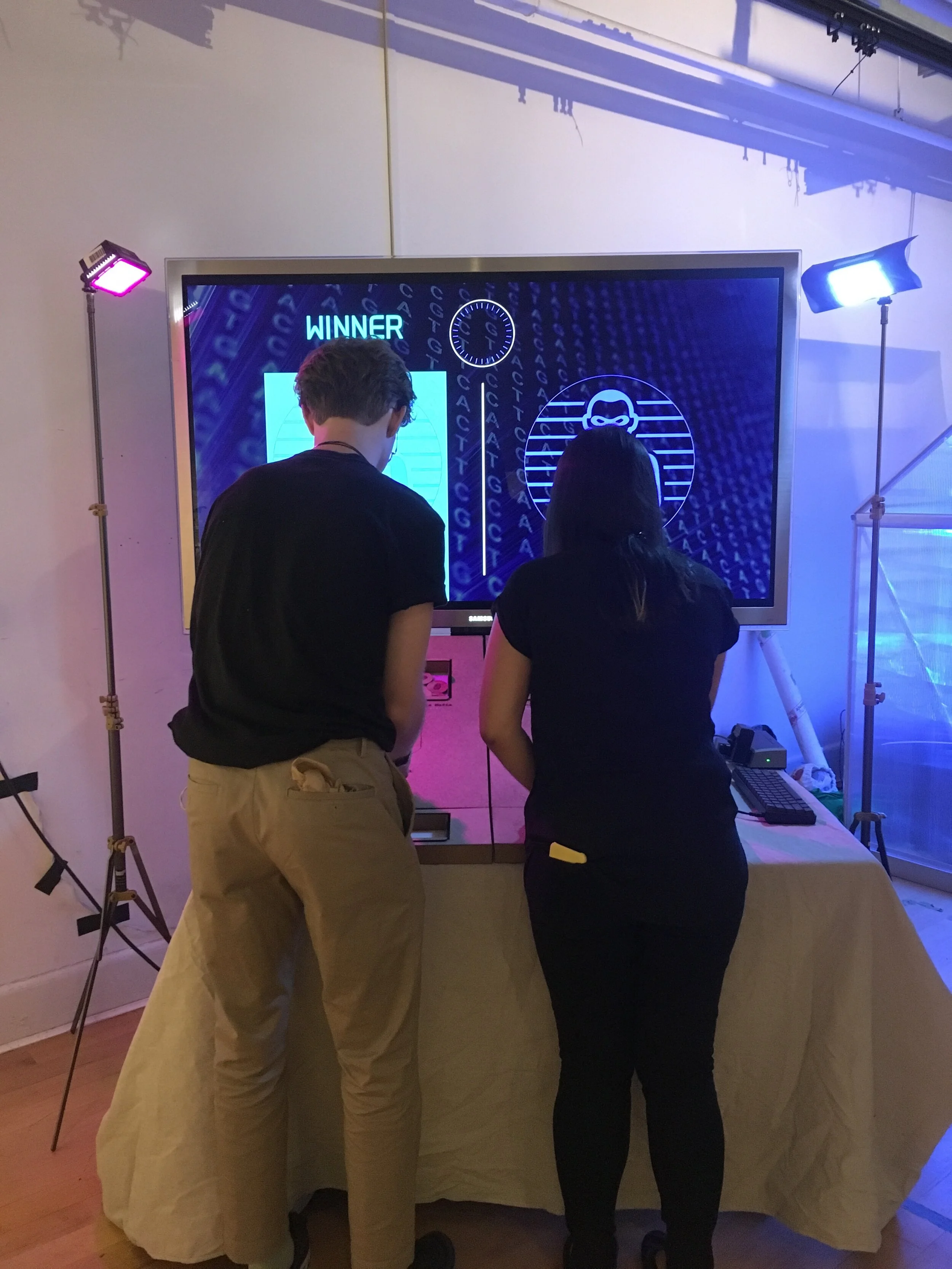
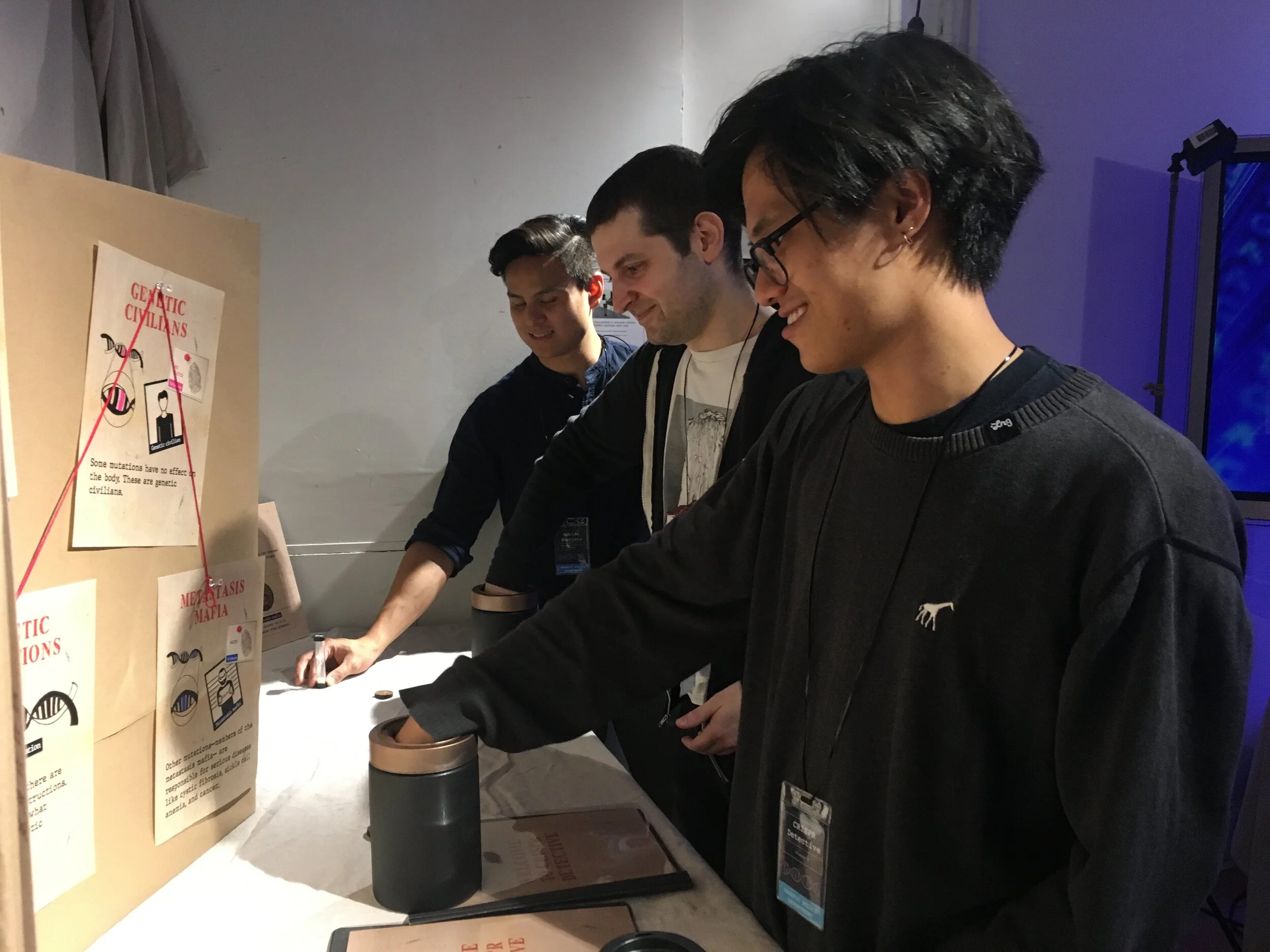
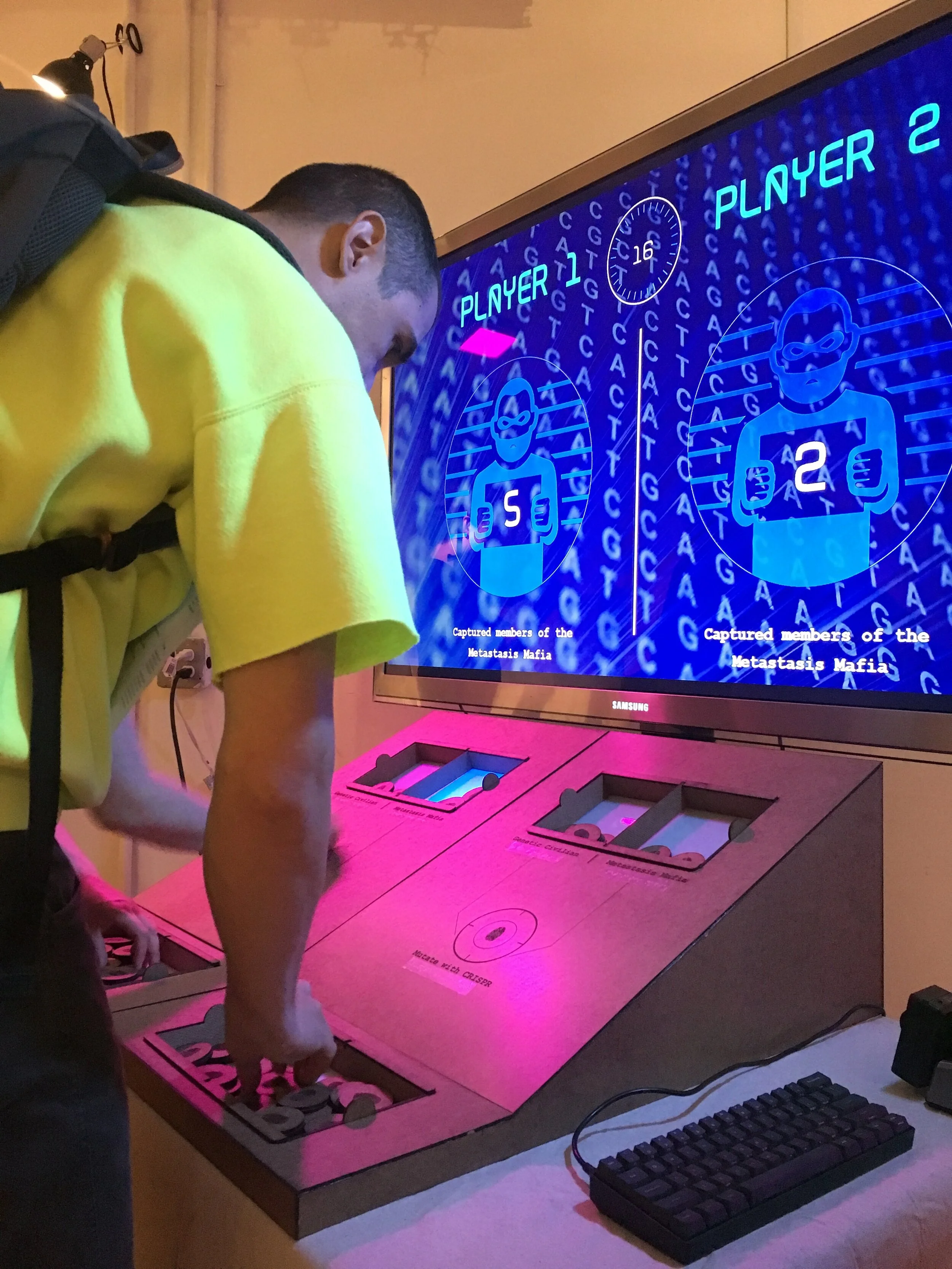




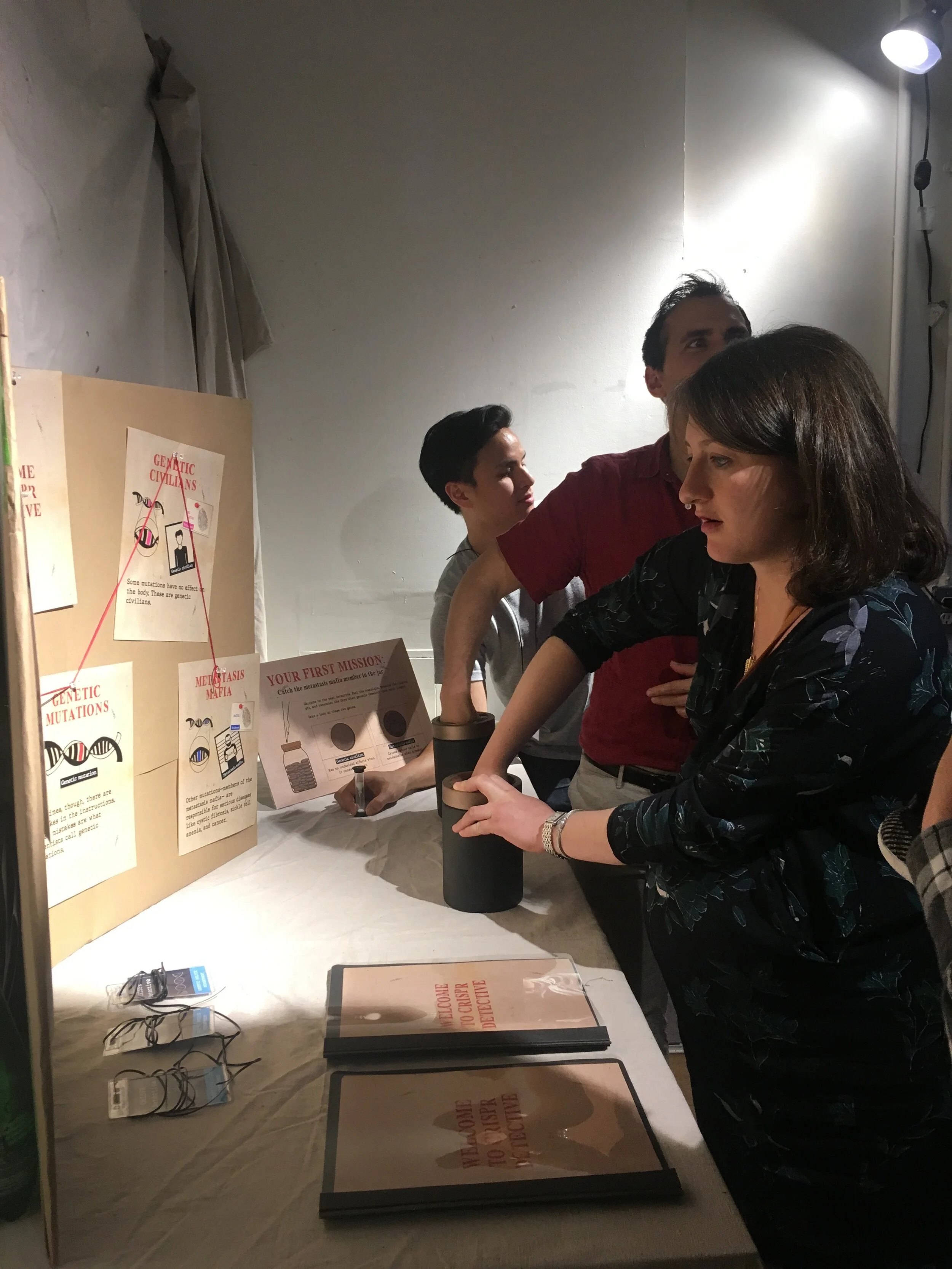
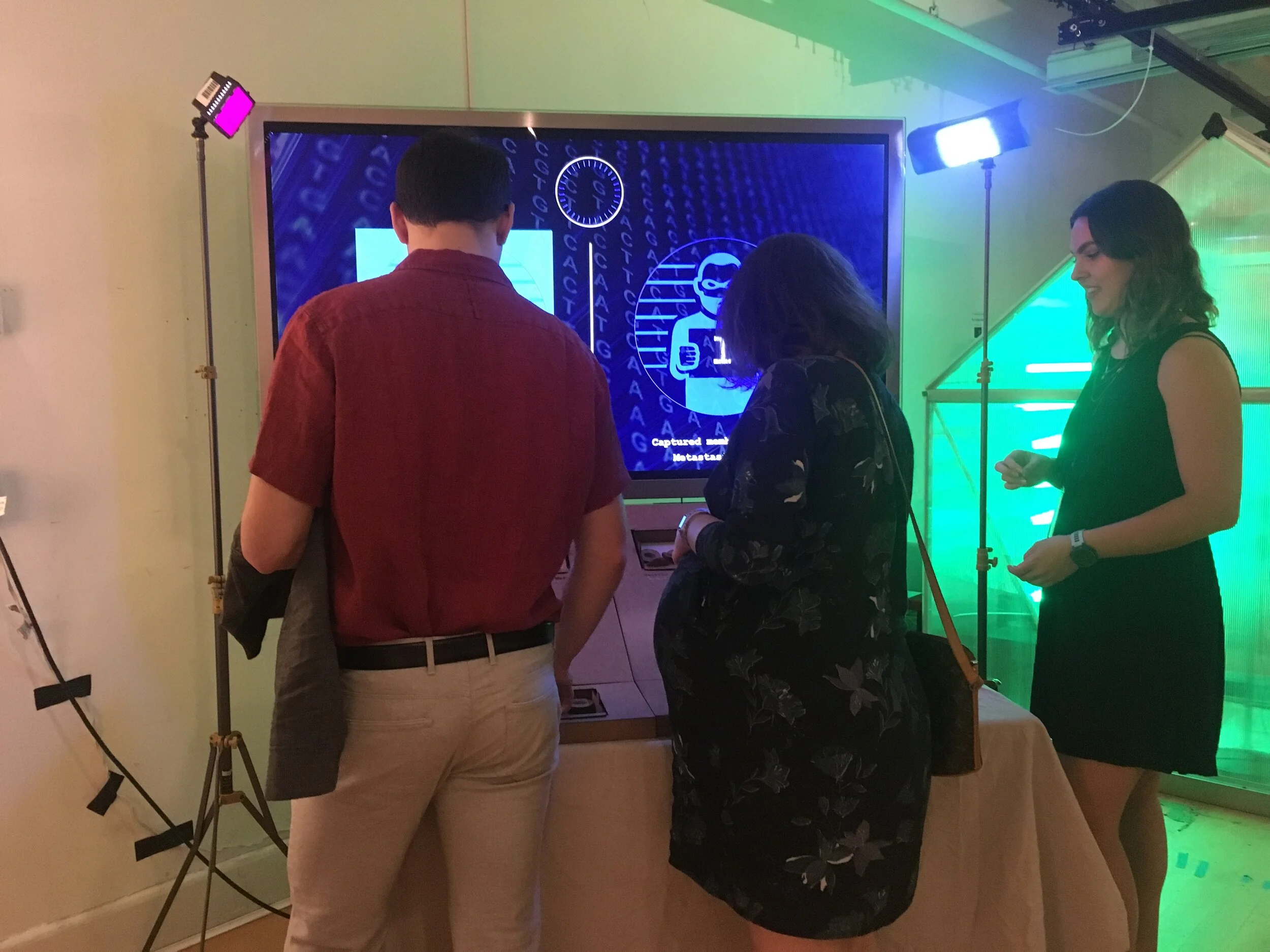

This project was developed as part of my Playfull Communication of Serious Research class during my second semester at ITP NYU. It was presented in the ITP/IMA Spring Show 2019, and at a temporal exhibit at the AMNH.
Group Members: Antonio Guimaraes, Caroline Neel, Adrian Bautista and Jingyi Wen.

